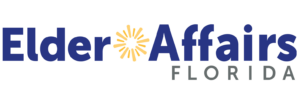Low-income households with at least one person 60 years of age or older with a past due amount on the electric bill.
Electric bills which are either past due, delinquent, or disconnected may receive assistance through EHEAP program. You can apply when there is a past due amount on your electric bill and while funds are available.
EHEAP-eligible residents can receive up to $5000 for multiple energy bills while funds are available.
There have been recent changes to the EHEAP program due to COVID, and households can now submit multiple applications. The total amount of EHEAP assistance a household can receive from all applications is $5000.
Another adult household member may initiate the application on behalf of the older adult. The application will be in the name of the person who is 60 or older.
Energy bills do not need to be in the elder’s name to qualify, but he/she will need to provide proof of residence, such as a driver’s license or other identification.
Income is determined by household size and income. Click here for the current guidelines.
After you gather all documents listed in the Documents Needed section, you can contact an application site or speak with our staff on how to start an application. If all necessary documents are provided, funding is available, and the application is approved, the EHEAP program will advise the electric company of the amount EHEAP will be able to pay towards your overdue bill.
Please provide a state identification (driver’s license or state ID card) and Social security card for all adults in the household.
Children are required to have a form of ID, but it’s understood that they might not yet have a photo ID. If they do not have a photo ID, please provide a birth certificate and Social Security card for each child.
A third-party verifiable ID with a photo is required. If an adult is not able to provide a Driver’s License or State identification card, they must provide both a birth certificate and another verifiable form of picture ID, such as a passport, school ID, health card ID, etc. As above, a Social Security Card is also required.
The Social Security Benefit Verification letter can be retrieved from the Social Security Administration webpage (www.ssa.gov) by creating an account through the option displayed as My Social Security account. As well, the letter can be requested via telephone to the Social Security Administration Offices.
Your electric company will be notified by the Alliance the same day the application is approved. Payments are made directly from the Alliance for Aging/EHEAP program to the electric company.
The EHEAP and LIHEAP programs work together to help families in need. A person can receive crisis assistance from both EHEAP and LIHEAP. Since the EHEAP and LIHEAP programs receive the same federal funding, the total crisis assistance between the two programs combined has a limit of $5000.


